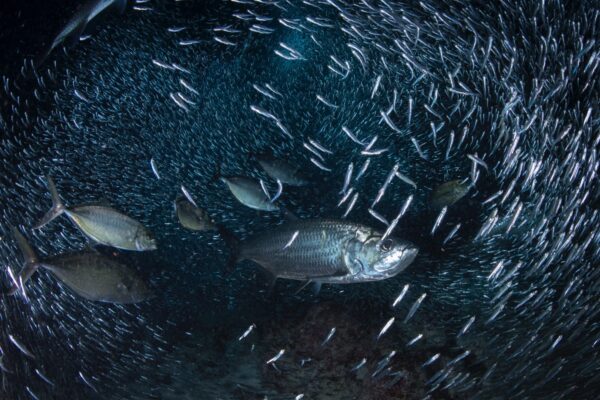Protected areas are set to cover one-third of oceans by 2030 yet rigorous empirical estimates of the relative performance of different marine protected area (MPA) types are few, so states a new study published in Proceedings of the National Academy of Sciences (PNAS).
The study compares the benefits from no-take vs. multiple-use MPAs, providing insights for locations where no-take restrictions may not be ethical or culturally acceptable.
While multiple-use performance was on average lower than for no-take MPAs, in high-pressure areas they produced similar outcomes when adequately staffed and appropriately regulated.
The study also highlights potential biases in existing estimates of relative benefits from no-take vs. multiple-use MPAs in previous published literature.
 Photo: Ellen Cuylaerts / Ocean Image Bank
Photo: Ellen Cuylaerts / Ocean Image Bank
Conservation outcomes
The study found that both no-take and multiple-use MPAs generated positive conservation outcomes relative to no protection (58.2% and 12.6% fish biomass increases, respectively), with smaller estimated differences between the two MPA types when controlling for additional confounding factors (8.3% increase). The study also found that both types of MPAs were more than 97% likely to improve fish populations.
Relative performance depended on context and management: no-take MPAs performed better in areas of high human pressure but similar to multiple-use in remote locations.
Good management and multi-use
Multiple-use MPA performance was low in high-pressure areas but improved significantly with better management, producing similar outcomes to no-take MPAs when adequately staffed and appropriate use regulations were applied.
For priority conservation areas where no-take restrictions are not possible or ethical, the authors say their findings show that a portfolio of well-designed and well-managed multiple-use MPAs represents a viable and potentially equitable pathway to advance local and global conservation.
“We hope these results can show and provide managers with an effective and an equitable path forward by being able to consider different options that can suit the local context,” said the lead author David Gill, speaking to Mongabay.
The full published peer-reviewed journal paper, ‘A diverse portfolio of marine protected areas can better advance global conservation and equity’, can be read in Proceedings of the National Academy of Sciences here.